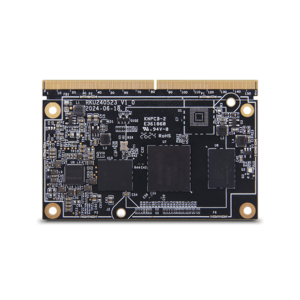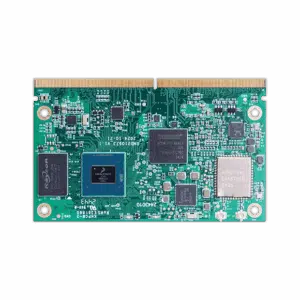Flexible COM Solutions from Geniatech Supporting SMARC, Qseven, and OSM Standards
Flexible COM Solutions from Geniatech Supporting SMARC, Qseven, and OSM Standards
Blog Article
Geniatech Pc On Modules: Scalable SoM Options for Stuck Applications
Embedded programs are becoming increasingly diverse, demanding flexible and scalable alternatives to meet their changing needs. This is wherever computer on modulesystem on module manufacturers enter into play. These compact, ready-to-use embedded techniques give you the foundations for developers to create high-performance, personalized answers with ease.

Why are computer-on-modules developing so much traction in the embedded methods industry? The answer is based on their scalability and effectiveness, making them the go-to choice for industries from professional automation to synthetic intelligence. Below, we have a deeper go through the importance of CoMs and how they're shaping the continuing future of embedded applications.
What Are Computer-On-Modules?
Computer-on-modules (CoMs) are small, self-contained processing programs that integrate crucial components such as processors, storage, interfaces, and operating systems onto a single module. Made to function as core of a custom request, they can be matched with a service panel to expand functions and adapt to specific use cases.
CoMs offer modular alternatives, eliminating the necessity for engineers to design a computing primary from scratch. Instead, they could dedicate work to innovating other aspects of the application, which eventually speeds up time-to-market while reducing development costs.
Why CoMs Are Revolutionizing Stuck Purposes
1. Scalability Without Redesign
Scalability is one of the standout benefits of CoMs. Electronics designers can target numerous performance levels by simply swapping segments, because of standardized table layouts. That modular method eliminates the prerequisite of upgrading hardware for every single efficiency tier. Whether for low-power IoT devices or high-performance equipment learning purposes, CoMs present unparalleled flexibility.
2. Shortened Growth Time
Time-to-market is usually critical for industries innovating in fast-moving environments. CoMs streamline this method by developing probably the most important research aspects in to a pre-tested module. This allows engineering teams to concentrate on planning provider panels or creating software, rather than handling every part of the hardware.
3. Place Efficiency
Lightweight size is yet another significant feature of CoMs. Given the integration of multiple parts right into a simple, small type component, these segments are suitable for purposes wherever space is at a premium, such as for instance medical equipment, robotics, and client electronics.
4. Help for Advanced Characteristics
To generally meet the demands of modern purposes, CoMs usually integrate support for cutting-edge technologies such as 5G connectivity, GPU speed, and real-time data processing. They help developers to gain access to these abilities without the problems of designing complicated electronics from the bottom up.
Industries Benefiting from CoM Answers
The versatility of computer-on-modules assures their existence across a range of industries. A number of the key groups that benefit contain:
1. Industrial Automation
CoMs provide trusted and scalable research energy for method get a grip on, robotics, and real-time tracking in industrial environments. Their compatibility with high-speed connection enables easy integration into Industry 4.0 ecosystems.
2. Medical Technology
Programs like patient checking, diagnostic equipment, and imaging systems need detail, stability, and high-performance computing. CoMs offer most of these, with the included benefit of lightweight models for space-constrained devices.
3. Artificial Intelligence
CoMs optimized for GPU performance are a favorite selection for AI-powered purposes like edge processing, face acceptance, and sensible surveillance systems. They help successful inference and real-time knowledge analysis.

4. Automotive Applications
Contemporary cars demand embedded options for infotainment programs, ADAS (Advanced Driver Support Systems), and diagnostics. CoMs meet these needs by providing consistent efficiency, endurance, and reliability.
The Future of Embedded Computing
The ongoing future of embedded computing relies heavily on scalable and modular solutions. With increasing demand for innovation across all sectors, CoMs will continue to be a vital enabler for companies striving to keep ahead of the curve. Their power to lessen difficulty, increase scalability, and shorten progress time makes them a vital part in the toolkit of electronics engineers.
For businesses seeking to produce high-performance applications without diminishing on development rate or quality, buying computer-on-modules is undoubtedly a step up the right direction. Report this page